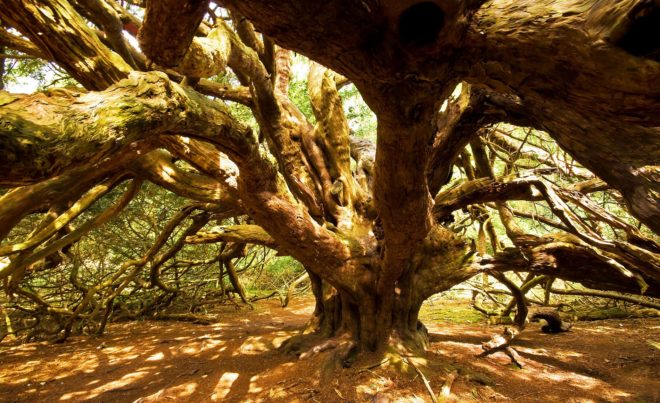Five of the spookiest spots in the South Downs this Halloween
October 7, 2020
With humans inhabiting the South Downs for millennia, it’s no wonder this rolling landscape is a swirling cauldron of myths, legends, folklore and ghost stories.
Misty mornings, magical woodlands, an abundance of ancient monuments, and some of the darkest skies in England, only add to its enigmatic and atmospheric allure.
So, for Halloween 2020, we take a look at five intriguing spots – all with stories cloaked in mystery and guaranteed to stir the imagination!
Kingley Vale, near Chichester
Who or what lies beneath Kingley Vale? A special place of Bronze Age burial mounds and Iron Age camps, tales of hauntings in the dark and silent grove of ancient yews will come as no surprise to those who know this spot. Stories tell of the Kings’ Graves or Devil’s Humps as the tombs of Viking leaders buried in 894, with the yews marking the battlefield site, stained red with the blood of dead warriors.
Legend has it that the woods are haunted by these Vikings, while one story suggests that the gnarled trees transform into human forms at moonlight.
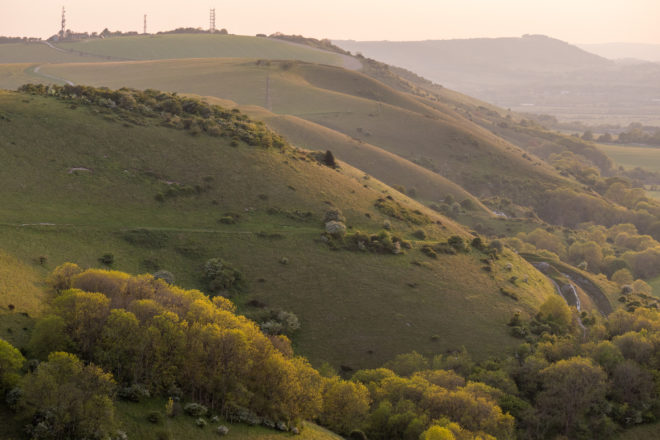
Devil’s Dyke, near Brighton
According to local legend, the devil decided to stop the Christian conversion of Sussex by digging through the Downs, letting in the sea and drowning them all.
Clods of earth thrown up by his digging formed Chanctonbury, Cissbury, Rackham Hill and Mount Caburn.
An old lady saw him, lit a candle behind a sieve and knocked her rooster awake. The devil thought the sun was rising and ran away, throwing the Goldstone into Hove on the way. One more clod fell from his hoof and became the Isle of Wight, or perhaps he landed so hard in Surrey he formed the Devil’s Punch Bowl!
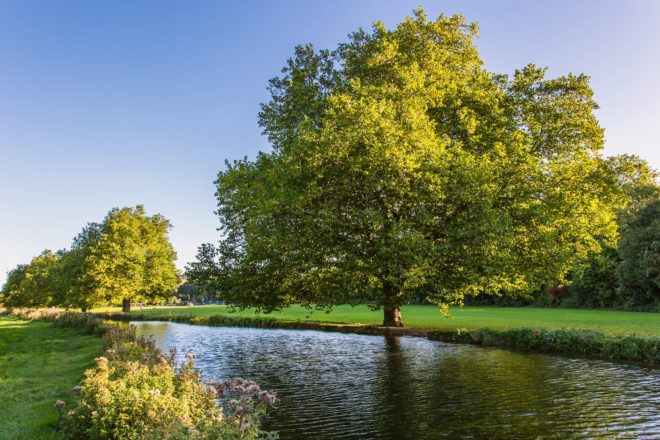
Cheriton, near Winchester
Does a ghost army of defeated Royalist soldiers return to the English Civil War battlefield near the village every four years?
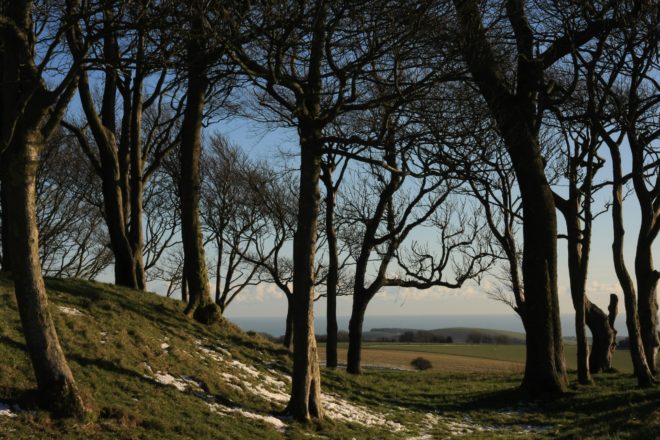
Chanctonbury Ring, near Steyning
This popular spot is reputed to be one of the most haunted locations on the South Downs. The beech trees that circle the ring were first planted in 1760. But long before it was the site of Bronze Age burials, Iron Age forts and a Roman temple. According to local stories, walking widdershins (anti clockwise) seven times round the ring will summon the Devil, ready to offer you a bowl of milk, soup or porridge in exchange for your soul.
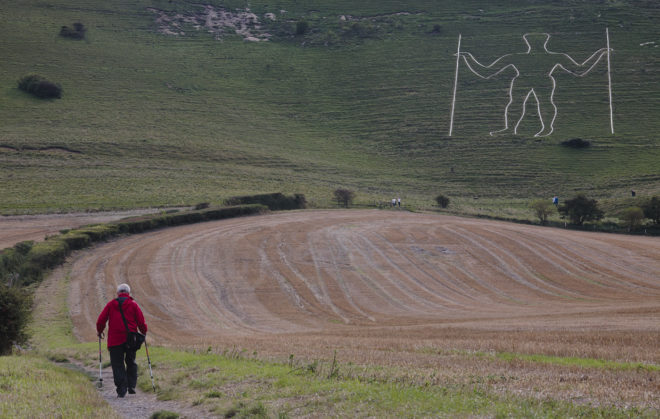
The Long Man of Wilmington, East Sussex
There are many theories about the age and history of the Long Man – from a Prehistoric fertility symbol to a 4th century Roman emperor. One local legend claims that the Long Man of Wilmington is a memorial outlining the figure of a giant from Windover Hill who fell and broke his neck. Another talks of a fight between the Long Man of Wilmington and another giant from Firle Beacon, which ended in the death of the tallest man to have ever lived in England.
 Anooshka Rawden, who leads on cultural heritage for the South Downs National Park, said: “We all love a good ghost story and there are plenty in the South Downs to choose from!
Anooshka Rawden, who leads on cultural heritage for the South Downs National Park, said: “We all love a good ghost story and there are plenty in the South Downs to choose from!
“A recent study by Chichester University on the myths and legends across Sussex and the South Downs revealed that areas in the National Park could be home to 80 per cent more stories of fairies, and a third more ghosts, than the average across East and West Sussex.
“The rich folklore of the South Downs only adds to the magic of the beautiful landscape, so I would encourage visitors to get out and explore this autumn and winter!”
To find out more about the rich and varied folklore of the South Downs National Park visit www.chi.ac.uk/fairytalemap

